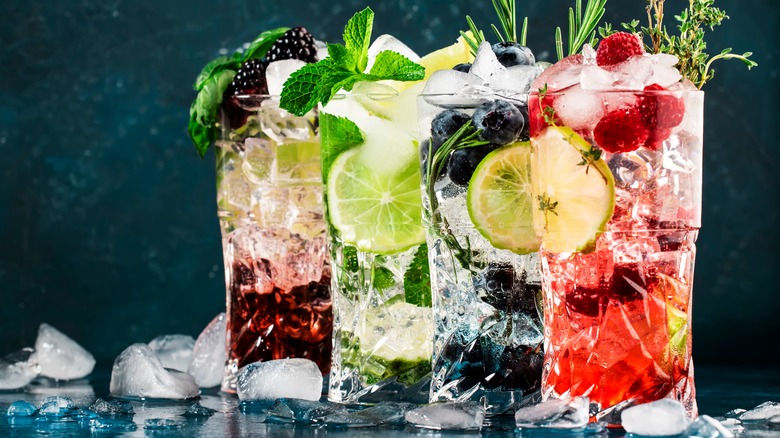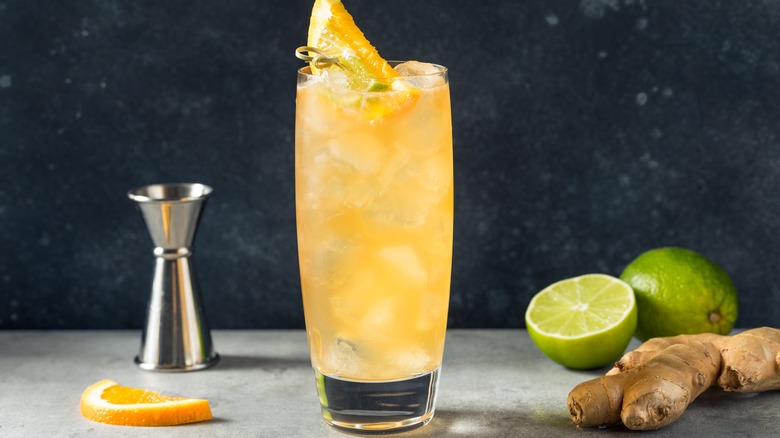The Fizzy Mistake You're Making When Mixing Highball Cocktails
The precise definition of what makes a highball a highball may vary slightly from bartender to bartender. However, in general, it is some type of spirit (or spirits) mixed with a carbonated, nonalcoholic beverage. It's also served over ice in a tall and narrow glass called a highball glass.
One common mistake that people make when mixing a drink like a highball, in which the carbonation is an integral part of the experience, is agitating the beverage too much. Since carbonation is essentially saturating a liquid with tiny carbon dioxide gas bubbles, shaking or stirring releases the bubbles, reducing the carbonation and making your drink flat.
To keep your highball as crisp as possible, it is best to split the carbonated beverage. When you sandwich the mixed ingredients of a highball between the carbonated beverage (about three-quarters over ice, followed by your mixed portion, then topped off with the last quarter of carbonation), the ingredients will naturally mix together with a little help from the carbonation, so there's no need for additional stirring. This keeps your beverage suitably bubbly.
Other mistakes you're making with highball cocktails
Making the perfect highball depends on maintaining as much carbonation as possible to give the drinker an effervescent and refreshing experience. Here are a couple more things you can do when making your next cocktail to help ensure you have the best results.
The warmer a drink becomes, the faster the carbonation will escape. To forestall fleeing bubbles, start with the coldest ingredients possible. Ideally, this means using a chilled glass with chilled spirits and, most importantly, a chilled carbonated beverage.
Regarding ice, the larger the cubes, the slower they will melt. When ice melts, it waters down the cocktail. In small amounts, this may be desirable to soften the bite of the alcohol. However, too much will cause your highball to lose its edge. If you're a professional, it's worth investing in craft ice. The home mixologist, however, won't need to go to such lengths.

